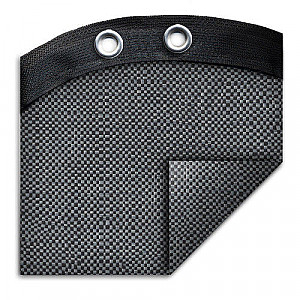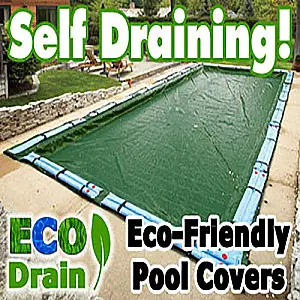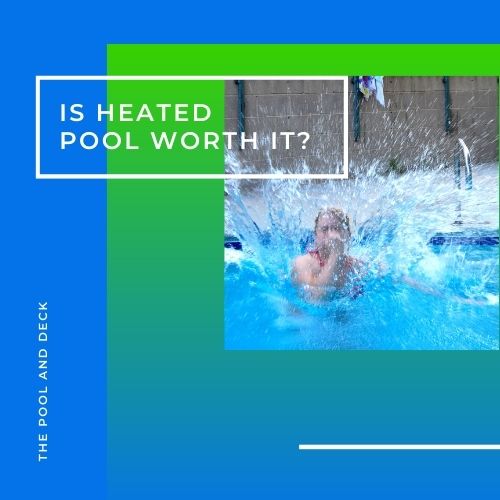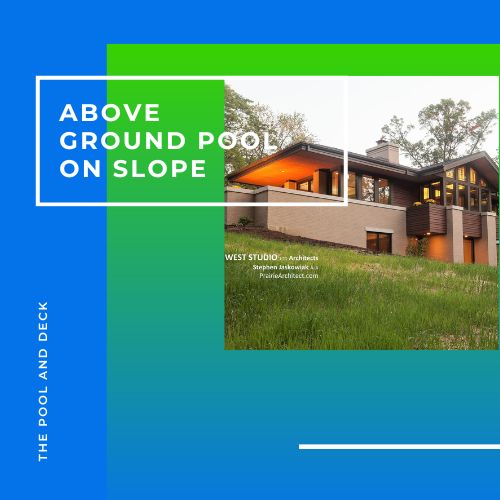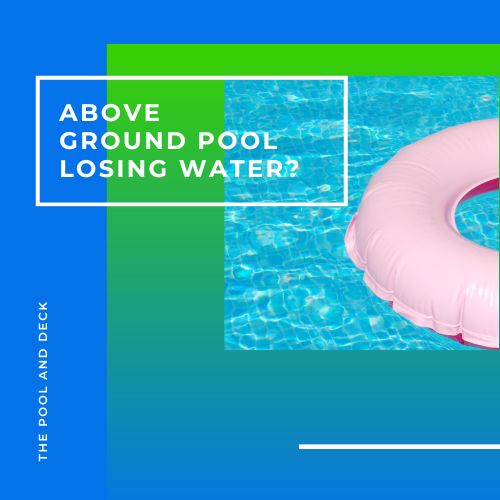Inground Pool Overflow in Winter? (Important Stuff You Need To Know!)
As an Amazon Associate, I earn from qualifying purchases.
Table of Contents
Can an Inground Pool Overflow in Winter?
You and your family had a lot of fun during the summer swimming and splashing around in your inground pool. Now that summer is getting over and winter is fast approaching, you need to winterize your inground pool. One of the questions that people often ask is, “Can an inground pool overflow in winter”?
An inground pool is very likely to overflow in winter. Your inground pool can get additional water from rain, snow and ice melt. You can reduce the risk by reducing pool water level and using the right pool cover before winter sets in.
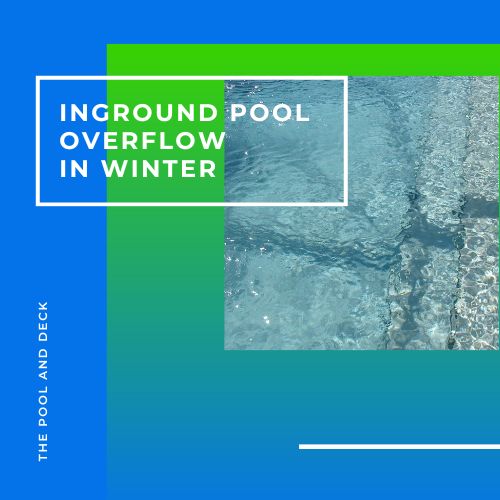
The frequency and severity of pool overflow depends on the climatic zone of your house. If you live in hot and dry Arizona, you are probably not even reading this post.
The zones where you are most likely to face a pool overflow situation in summer are the hurricane zones in Florida and Texas. During winter, zones that see temperatures dropping below freezing or have a high precipitation are the most vulnerable to inground pool overflow.
What Happens If the Inground Pool Overflows in Winter?
Maintaining the correct water level in an inground pool is essential.
You do not want to drain the pool below the minimum recommended level. Keep the water level 2/3rd of the way up at the shallow end. Failure to do this can lead to the pool walls collapsing inward.
Remember, the water in the pool acts as a counter pressure to the hydrostatic pressure from the ground water surrounding the pool.
Corrosion
At the same time you do not want your pool to overflow. The water from the overflow will run down, alongside the back of the pool walls. Pool water is mildly acidic due to the chlorine in it. This is enough to corrode the pool structures and weaken the pool wall.
Decks & Patios
The overflow can also run on to the pool decks and patios. Decks made out of wood can warp and rot. Concrete patios can crack & corrode. Paver patios can become uneven or sink due to soil subsidence.
Pool Chemistry
Excess water in your pool from rain, snow or ice melt will also mess up the pool water chemistry balance. You may not be using your pool during winter but you still need to ensure that there is no growth of algae or other pathogens.
Should You Cover Your Inground Pool in Winter?
If you live in a place which has a tropical climate for most of the year, then the above question is redundant. You actually don’t have a winter worth talking about.
However, irrespective of whether you experience mild cool winters or winters that see temperatures below freezing for several weeks, you need to close your pool, if you are not going to be using it for an extended period of time.
An important part of closing the pool is lowering the water level and covering your pool. There are 2 options.
A “Mesh” cover that allows rainwater and snowmelt to filter through to the pool but blocks dry leaves, twigs, etc.
A “Solid Vinyl” winter pool cover is the other option. It is water impermeable. Any rain water or snowfall just sits on the cover along with yard debris. The weight can make the cover sag in the middle, so you’ll need to keep clearing the pile up frequently. This requires you to buy a portable pump.
Both act as a safety barrier, preventing kids and pets from falling into the pool accidentally. Each has its pros & cons.
How High Should Pool Water Be in Winter?
Pool Water Level in Summer
During summer, that is the period your inground pool is in operation, you must maintain the pool water level to be between 1/3 and 1/2 way up the skimmer box opening.
The reason is simple. You want the floating debris on your pool surface, such as dry leaves and dead insects, to be sucked in and filtered out by the skimmer basket.
If the water level is too high, water will get sucked in but the debris will continue to float. On the other hand, if the water level drops below the skimmer opening, then the pool filtration system will be sucking in air rather than pool water. This can increase the risk of your pump burning out.
Pool Water Level in Winter (with Mesh Cover)
In case you are using a mesh pool cover then the rainwater and some of the snow will get into the pool, raising the level. This can cause the pool to overflow.
By reducing the pool water level you provide space to accommodate unexpected water inflow into the pool, due to rain storms or snowfall.
During winter, when you close your inground pool, you should reduce the water level to between 18”-24” below the bottom of the skimmer opening, when using a mesh type pool cover.
Pool Water Level in Winter (with Solid Cover)
In case you are using a solid vinyl pool cover, the rainwater and the snow will pile up on the cover and make it sag. You do not want the pool cover to be touching the pool water, as it shortens the cover’s life. This is why you need that additional gap.
During winter, when you close your inground pool, you should reduce the water level to between 3”-6” below the bottom of the skimmer opening, when using a solid viny pool cover.
Protection from Freezing
Another reason for reducing the water level to below the skimmer opening is to protect the pool filtration system components such as the skimmer and return jets from freezing.
Make sure to place an airtight rubber plug in the return jet and attach the skimmer plate inside the pool on the skimmer opening to avoid any water getting into the pipes.
During the course of the winter, the water level in your inground pool will rise, especially if you have a mesh type pool cover. You should constantly keep a check on the water level and reduce it by using a submersible pump from time to time.
How Low Should Pool Water Be in Winter?
You need to reduce the inground pool water level before closing the pool for winter. However, there is a limit to how low you can go.
Remember, the water in the pool acts as a counter pressure to the hydrostatic pressure from the groundwater surrounding the pool. As such the water level in the pool should not go below the groundwater level outside.
A good thumb rule is to keep the pool water level 2/3rd of the way up at the shallow end. In other words, never reduce the water level, lower than 24” from the skimmer opening level.
A very low water level can lead to the pool walls collapsing inward due to the hydrostatic pressure from the groundwater.
It is better to err on reducing the water level too little (and risk pool overflow) than reducing the water level too much (and risk pool collapse).
Thank you very much for reading the post. I do hope you found it informative and helpful.

